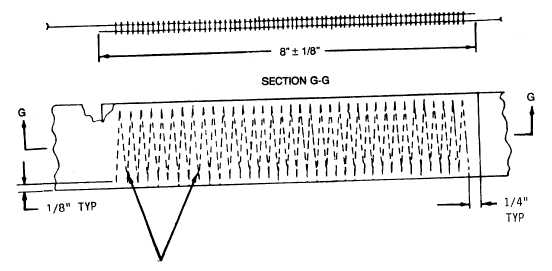TM 10-1670-296-20&P 0012 00
0012 00-5/(6 Blank)
b.
Replace Buffers. Cut a 20-inch length of type XXVI nylon webbing and wax the ends. Offset buffer
ends 1-inch. Stitch to inside loop longitudinally down webbing centerline, one row of stitching using
size FF thread, 1-inch beyond end of buffer, no backstitch.
c.
Cut the webbing on both sides of damaged area with cuts between fixed keepers. Remove fixed
keepers from portion of loop to be replaced. Remove damage webbing. Sear the edges of the
webbing ends of the remaining loop.
d.
Cut a length of type XXVI nylon webbing the length of the damaged webbing that was removed,
adding an additional 16 ¼-inches for splice allowance. Sear both ends.
e.
Position one end of the new webbing on the outside of one end of the remaining loop so that it
overlaps 8 1/8-inches.
f.
Sew 72 } 5 lines of stitching using size 5 thread 4 to 6 stitches per inch, using the stitch formation
shown in the illustration below. Size 6 thread may be used if size 5 thread is unavailable. Stitching
shall be performed according to WP 0010 00, SEWING PROCEDURES, using specifics in Table 1.
g.
Repeat steps e. and f. with the other end of the new webbing and the remaining loop end.
h.
Replace fixed keepers.
REPLACE
Replace unserviceable multi-loop line with a serviceable one from stock.
END OF WORK PACKAGE

